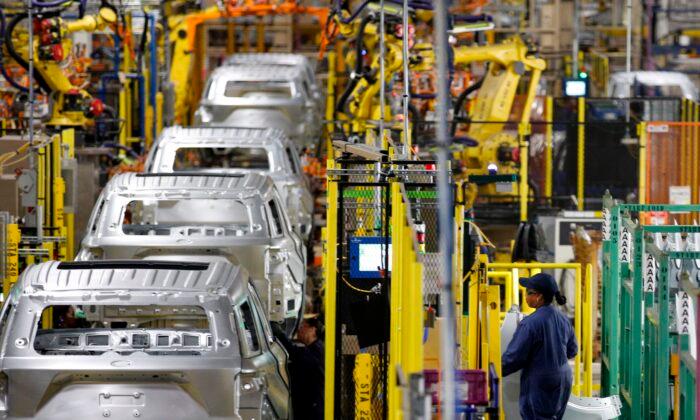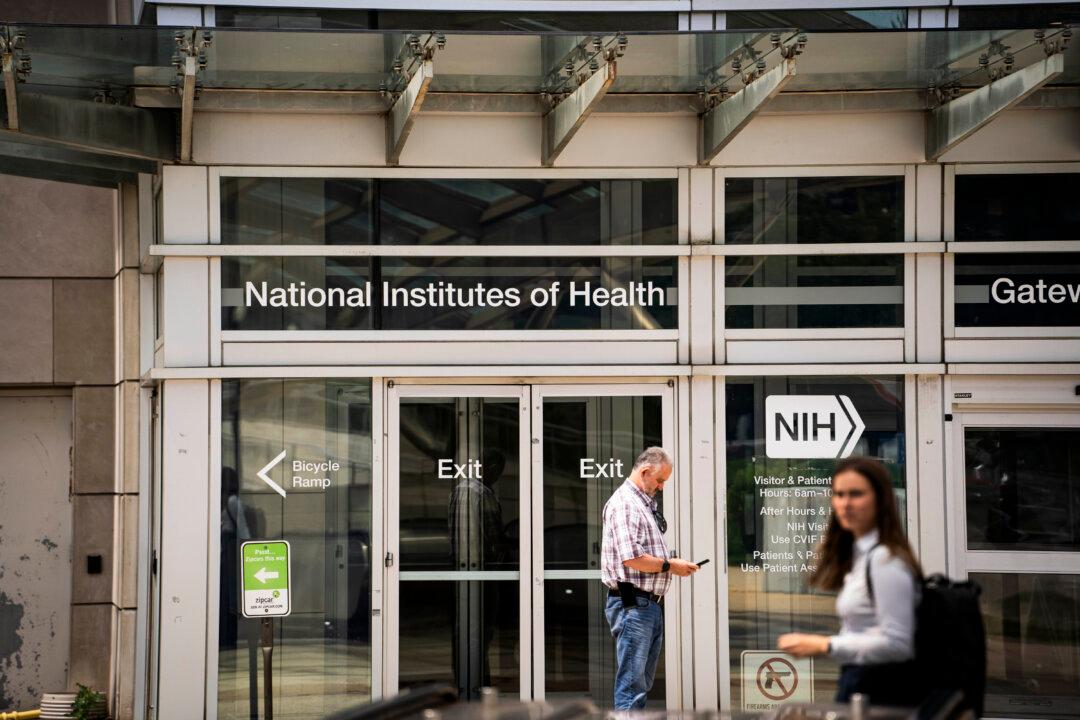New orders for American-made goods have suffered the sharpest drop in three-and-a-half years, with the latest sign of a slump in U.S. manufacturing adding to fears of a coming recession.
The decline is the sharpest monthly drop since April 2020, when pandemic lockdowns rattled the economy and threw it into a recessionary tailspin.
The Commerce Department report also showed that new orders for manufactured durable goods fell 5.4 percent after a 4.0 percent rise in September.
Economy Hitting ‘Stall Speed’
The closely-watched Institute for Supply Management’s (ISM) Manufacturing PMI shows that U.S. manufacturing activity contracted in November for the 13th consecutive month, as demand softened and new orders fell.The 13-month-long U.S. manufacturing decline is the longest down streak since the 2008-09 financial crisis. The manufacturing sector accounts for roughly 11 percent of the U.S. economy.
Even though the U.S. economy has defied predictions for a recession, recent economic data (in addition to the manufacturing slump) paint a picture of a looming slowdown, including lackluster growth in consumer spending and a cooling job market.
Recession ‘In the Near Term’
Last week, data showed that consumer spending, which accounts for over two-thirds of U.S. economic growth, grew by a tepid 0.2 percent in October after a 0.7 percent gain in September.A separate report from the Labor Department showed that initial claims for state unemployment benefits rose by 7,000 to 218,000 for the week ending Nov. 25, while the number of people receiving benefits after an initial week of aid (a proxy for hiring) rose to 1.927 million—the highest since November 2021.
“Among the leading indicators, deteriorating consumers’ expectations for business conditions, lower ISM® Index of New Orders, falling equities, and tighter credit conditions drove the index’s most recent decline,” Justyna Zabinska-La Monica, business cycle indicators senior manager at the Conference Board, said in a statement.
She added that the October decline signals a recession “in the near term.”
“The Conference Board expects elevated inflation, high interest rates, and contracting consumer spending—due to depleting pandemic saving and mandatory student loan repayments—to tip the US economy into a very short recession,” she added, with the Conference Board predicting that the U.S. economy will grow in 2024 by a paltry 0.8 percent.
Although gross domestic product (GDP) grew by 5.2 percent, gross domestic income (GDI) grew at a paltry 1.5 percent in the prior quarter.
‘Dangerous and Inflationary’
Recent data from October show that while 69 percent of U.S. consumers expect a recession over the next 12 months, a whopping 84 percent of C-suite executives believe a contraction will materialize.“A lot of things out there are dangerous and inflationary. Be prepared,” he said at the 2023 New York Times DealBook Summit in New York on Nov. 29.
Mr. Dimon said geopolitical tensions and the energy transition were prompting governments to ramp up spending, which is inflationary. If a new inflationary spike were to materialize, this would pressure the Federal Reserve to raise interest rates further, which could tip the economy into a downturn.
“Interest rates may go up, and that might lead to recession,” he warned.
Avoiding foreclosure or eviction and covering medical expenses were two of the top reasons given for making a hardship withdrawal.







